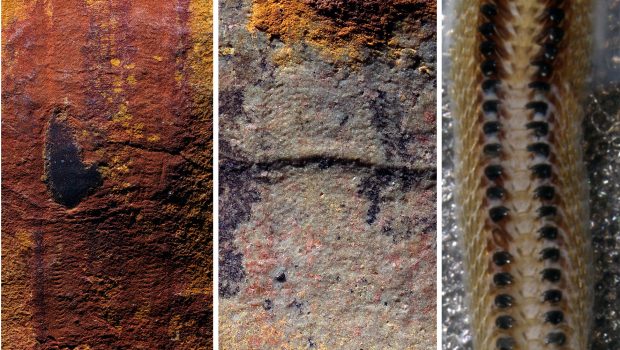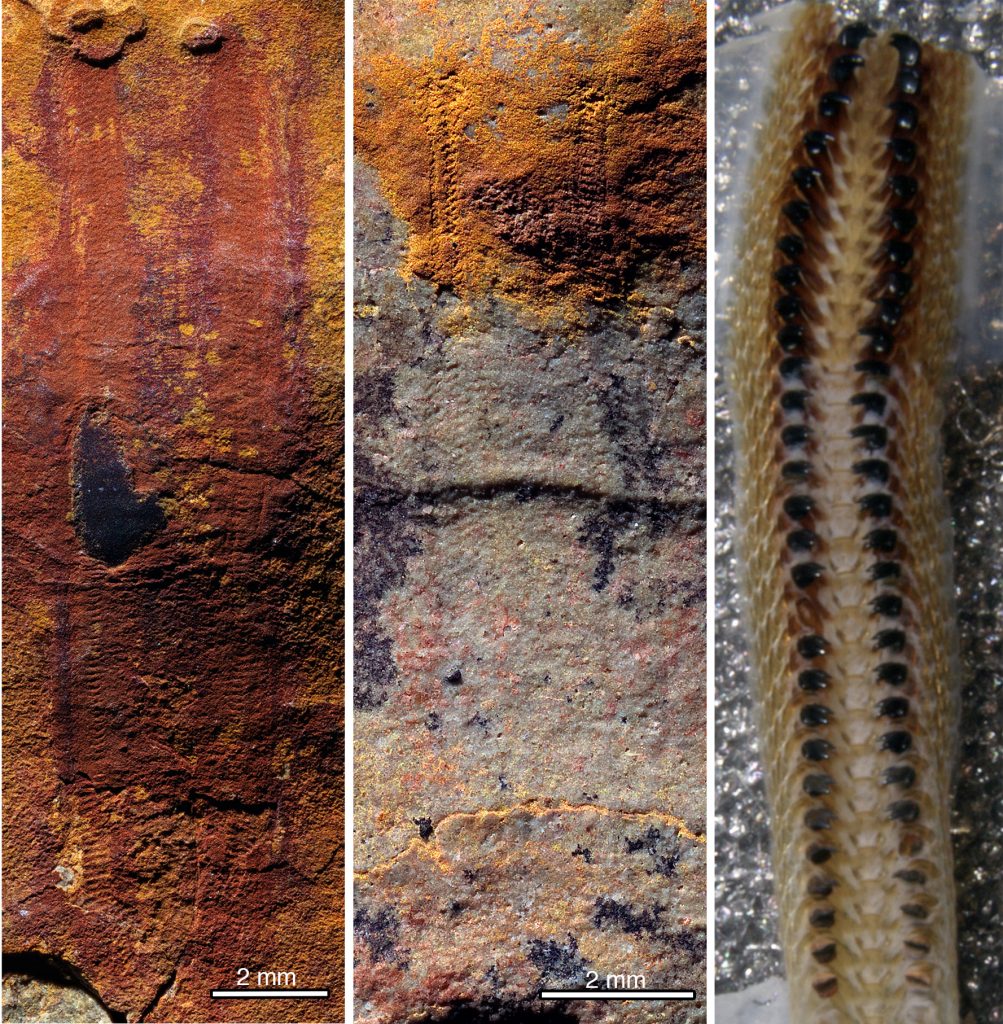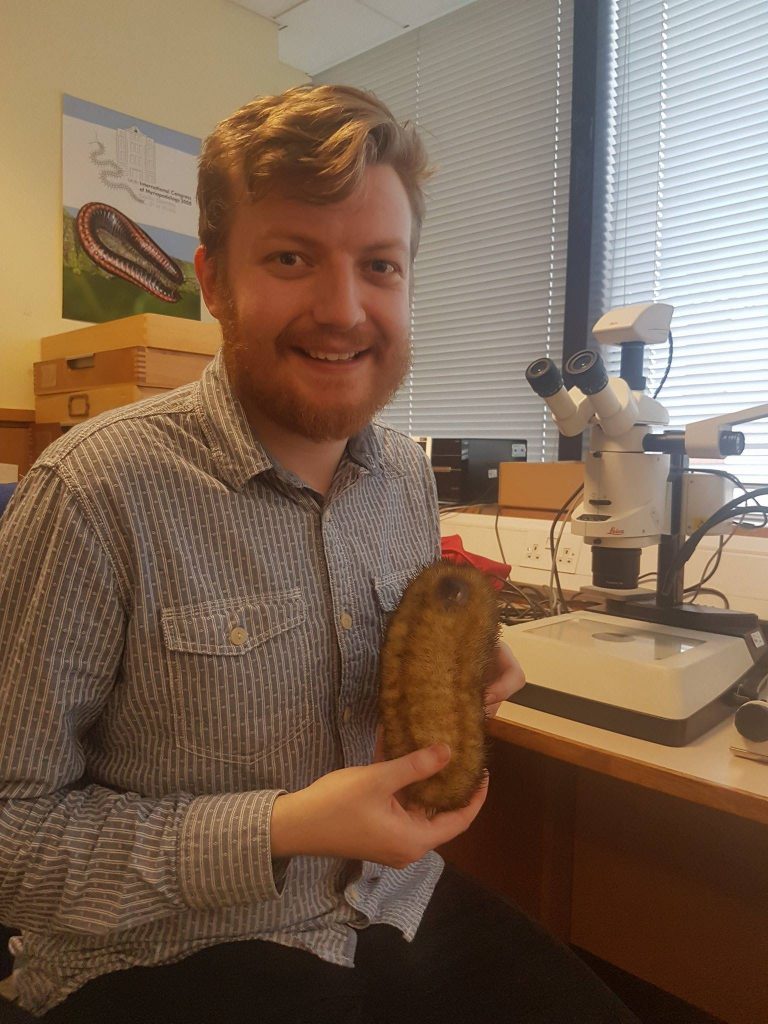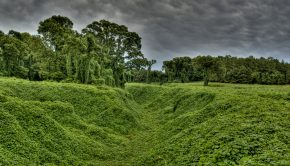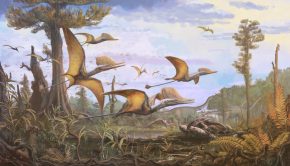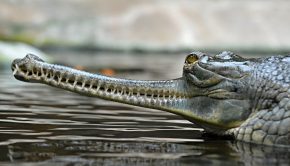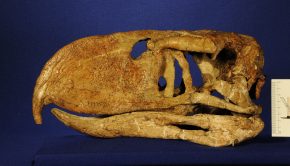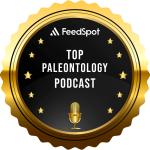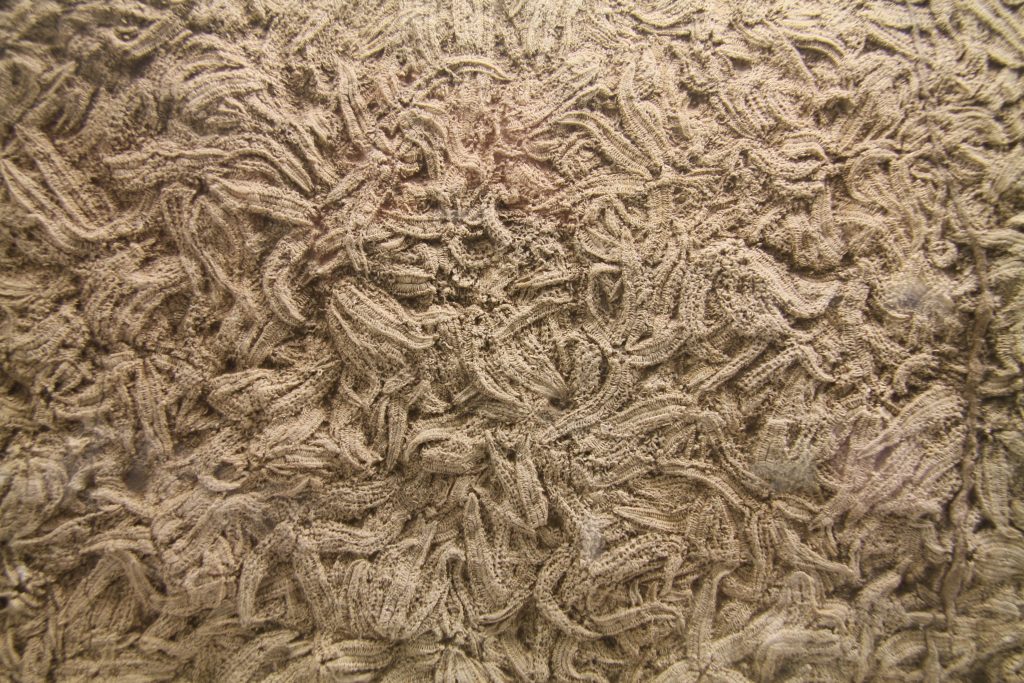New Ordovician fossil sheds light on the origin of molluscs
Molluscs are among the most disparate of the animal phyla. They range from the incredibly complex squids and octopods, which have acute vision and can even be intelligent enough to use tools, to very simple and entirely headless animals like clams and mussels. These vastly different body plans arose in a geologically brief interval of time, the Cambrian Explosion, with the shells of primitive gastropods, cephalopods and bivalves all known from the Early Cambrian. This rapid diversification has left few body fossils to fill the gaps between the different classes of mollusc and as a result a coherent narrative of their evolutionary history has been difficult to piece together from the geological record. Numerous fossils have been described from the Cambrian period that are readily recognizable as members of the living molluscan classes. Primitive bivalves (clams, mussels and their relatives), gastropods (snails) and cephalopods (squids, octopods and Nautilus) are all known from the early Cambrian. Although ancient and important, these fossils are unhelpful in understanding the ancestral mollusc, as they have already evolved many of the distinctive characteristics of the living groups. Palaeontologists are interested in disentangling what features were present in the last common ancestor of organisms and also in what order these characters evolved. Molluscs have presented a particular challenge in this regard, due to their vastly divergent body plans and rapid origins.
Whilst much can be gleaned from studying living organisms and their relationships, the fossil record is the only way of gathering direct evidence of ancestral body plans. Fossils that may help to unravel this mystery have been the subject of much scrutiny and highly divergent interpretations. Chief among these is Wiwaxia, an iconic fossil from the Burgess Shale. Wiwaxia is covered in bundles of hard, chitinous scales shaped like oval leaves with paired rows of long spines. These spines are similar to the bristles of annelid worms down to the microscopic level, but Wiwaxia also preserves a radula like feeding apparatus, a feature that is characteristic of molluscs. Debate about the affinities of Wiwaxia has focused on these two features, with some researchers placing it on the lineage leading to annelids and others arguing that it is a primitive mollusc. It has even been argued belongs to an even deeper part of the evolutionary tree, as the annelid-like scales it possesses are also seen in brachiopods (lamp shells) and bryozoans (the moss animals).
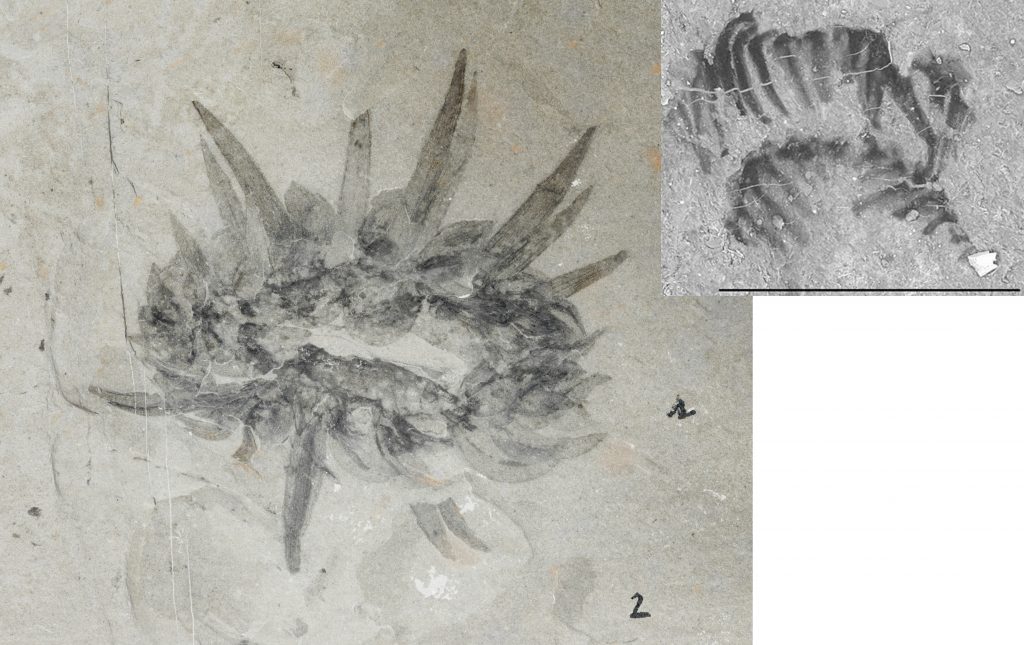
Figure –Wiwaxia corrugata (left) from the Burgess Shale (photograph by Martin R. Smith), radula of Wiwaxia (top right) (SEM micrograph from Zhang et al. 2015).
Halkieria is a fossil that has also defied classification for several decades. Prior to 1989, Halkieria was only known from the isolated remains of its sclerites (a term for small mineralized scales and spines) and it was unknown exactly how they fitted together, but it was thought they came from an animal that looked like Wiwaxia. The discovery by Simon Conway Morris and John Peel of complete specimens from Sirius Passet, a remote fossil site in North Greenland, revealed that in addition to these sclerites Halkieria possessed two shells, one at the front and another at the rear of the body. This bizarre body-plan prompted comparisons of halkieriids with annelids, brachiopods and molluscs leading Conway Morris and Peel to formulate an elaborate hypothesis, in which brachiopods (the lamp shells) evolved from the folding of a Halkieiria-like organism, with the shells at either end becoming the dorsal and ventral shells of brachiopods. Although this hypothesis has turned out to be incorrect in detail, it recognized that molluscs, brachiopods and annelids share a common ancestry, a revelation in evolutionary biology that was only just being realized by molecular phylogenetics, the field of biology concerned with working out how organisms are related to each other using their DNA. In the years following, Halkieria has also been compared mostly with molluscs, but authors have disagreed as to precisely where Halkieria may sit in the molluscan tree of life. Papers by Stephan Bengtson and more recently by Jakob Vinther and colleagues have compared Halkieria with the chitons, which have similar sclerites that surround eight, rather than two shells. The discovery of Orthrozanclus in a study by Simon Conway Morris and Jean Bernard Caron from the Burgess Shale added yet another fossil to the mix. Like Halkieria, Orthrozanclus has a single shell and a body covered in sclerites, but also has long spiny sclerites, prompting a direct comparison with Wiwaxia. Together, the fossils with shells and sclerites are referred to as halkieriids and halwaxiids refers to a grouping of Wiwaxia and the halkieriids.
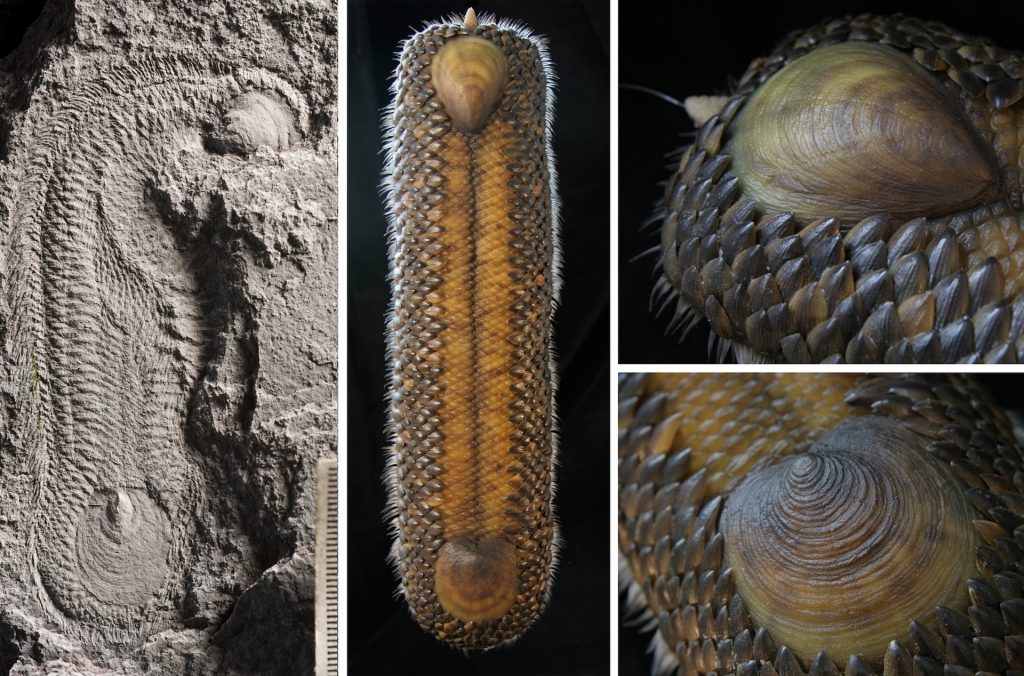
Figure – Fossil of Halkieria evangelista from Sirius Passet (left) (photo courtesy of Jakob Vinther), model of Halkieria showing whole body (centre), anterior shell (top right) and posterior shell (bottom right). Model and photographs by Esben Horn (10tons.dk).
A new discovery from the Early Ordovician (about 480 million years ago), has added key new evidence to this debate. Calvapilosa kroegeri is a newly discovered fossil from the Fezouata Formation of southeastern Morocco, which like Halkieria and Orthrozaclus has a sclerite covered body and just one shell at the front of the body. This fossil provides a key piece of new evidence as it preserves the impression of a radula on the shell plate. This radula contains many tiny teeth in over one hundred rows that confirm that halkieriids are molluscs. Although not all molluscs possess such a radula, it is not known from any other group of organisms. Although a radula is seen in Wiwaxia, the Wiwaxia radula only has teeth in 2 or 3 rows, as opposed to the numerous rows in Calvapilosa. A complex radula like this is what is seen in most other molluscs, suggesting that Wiwaxia and halkieriids are only distantly related, but that Wiwaxia is still an early mollusc.
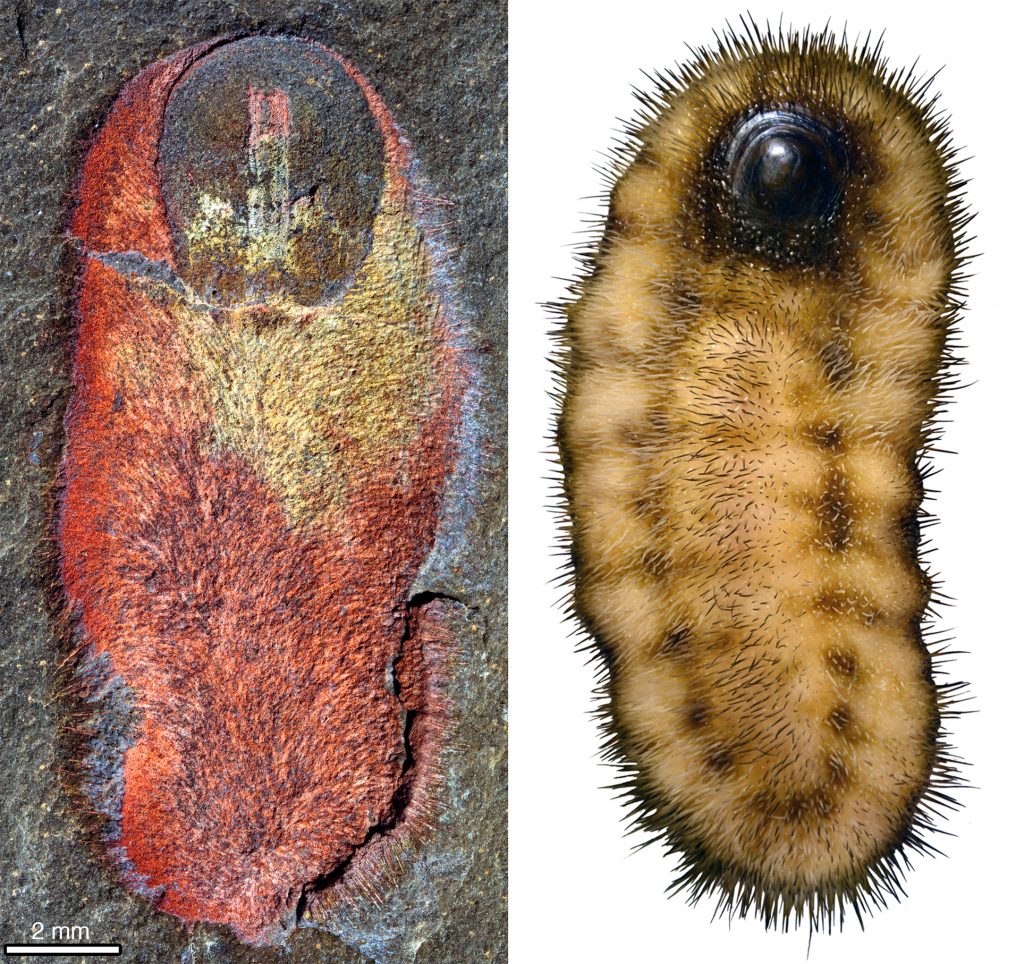
Figure – Fossil of Calvapilosa kroegeri from the Fezouata Formation of Morocco (left)(photo by Peter Van Roy), reconstruction of Calvapilosa (right) (photo by Jakob Vinther). Model made by Esben Horn (10tons.dk).
An analysis of the features present in all of these fossils and closely related organisms suggests that halkieriids belong to the lineage leading to chitons and aplacophorans (the shell-less worm molluscs). Although Calvapilosa is more closely related to some molluscs than others, the presence of a single shell rather than eight (as in chitons) or two (in Halkieria), indicates that the molluscan ancestor had only one shell. A single shell is also seen in Nautilus, gastropods (snails) and scaphopods (tusk shells) indicating that the two shells of bivalves (clams and mussels) and eight shells of chitons evolved later in evolution. The spines of Wiwaxia along with the mineralized but otherwise similar spines in chitons, aplacophorans and halkieriids, suggest that the molluscan ancestor would also have possessed some sort of spiny covering.
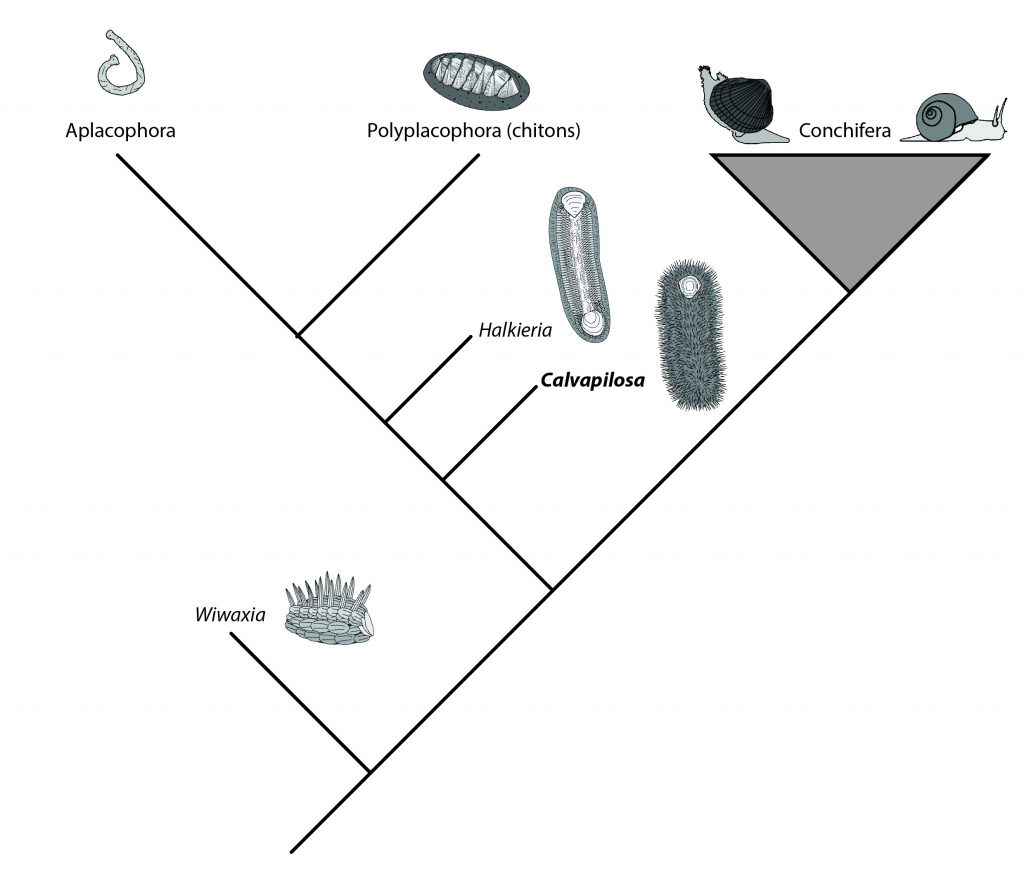
Figure – Evolutionary tree of molluscs, showing the placement of Calvapilosa, Halkieria and Wiwaxia.
Luke is a PhD student at the University of Bristol and Natural History Museum, London. He is interested in the origin and early evolution of animals, focusing on annelid worms and molluscs

